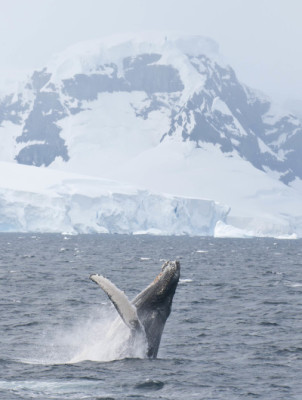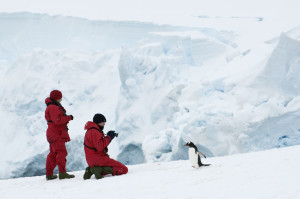15 FASCINATING FACTS ABOUT HUMPBACK & MINKE WHALES IN THE ANTARCTIC PENINSULA
15 FASCINATING FACTS ABOUT HUMPBACK & MINKE WHALES IN
THE ANTARCTIC PENINSULA
By DR ARI FRIEDLAENDER, ONE OCEAN EXPEDITIONS
Specialists in small ship cruise adventures One Ocean Expeditions is offering a truly unique opportunity to join a 10-night Antarctic trip to study humpback, minke and killer whales, departing from Ushuaia on 16 March 2015.

Participants on this special departure will learn how to document whale numbers, help to conduct photo surveys, determine movement patterns of marine mammals and identify individual animals. They will also be able to locate and document the behaviour of whales previously fitted with satellite tracking devices.
Dr Ari Friedlaender is a Research Scientist at Duke University, he has been to the Antarctic nearly 20 times on scientific voyages

Dr Ari and his team have compiled 15 fascinating facts based on their research to track the long-term movement patterns of humpback whales around the Antarctic Peninsula and to understand how climate change and global warming affects whales and other krill predators:
- During the summer humpback whales feed during the day and night, but later in the season they only feed at night.
- Humpback whales can dive to nearly 400 meters to find krill but typically feed at only 50 meters depth.
- A humpback whale can lunge up to 600 times in a day to feed. If you think this is a big number, we have found that minke whales can lunge over 2000 times in a day!
- Humpback whales typically lunge feed 3-8 times on a feeding dive, while minke whales can lunge up to 24 times on a single dive!
- Minke whales feed underneath the sea ice where krill swarms are not available to other whales.
- Minke whales are almost always feeding, taking many small bites as they go, whereas humpback whales feed more in bouts of feeding that can last several hours at a time, but often rest afterwards because for larger whales, lunge feeding requires more energy.
- We used to think that humpback whales only sing on tropical breeding grounds but we have recorded humpback whales singing on the feeding grounds as well late in the season.
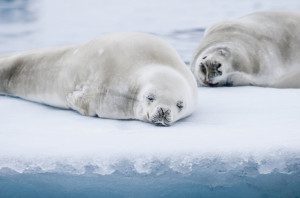
- During winter, many Antarctic minke whales leave Antarctic waters and migrate to sub-tropical breeding grounds. We have seen minke whales with satellite tags migrate past Easter Island.
- The breeding ground in Panama for Antarctic humpback whales is, in some places, less than 20 miles away from the breeding grounds for northern hemisphere humpback whales, although the seasons are different for each population.
- Minke whales are typically found alone or in small groups but in bays with sea ice we sometimes see groups of up to 40!
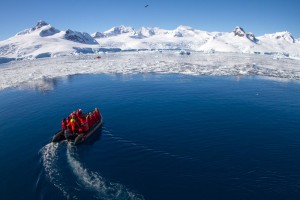
- Killer whales will make ‘maintenance’ migrations from Antarctica to warmer waters off Brazil to shed their skin and return with a fresh ‘paint job’. This migration up and back to warm waters can take 3 weeks and the whales cover almost 4000 miles in that time.
- Humpback whales use nearly the entire Antarctic Peninsula to feed and often move between the Gerlache Strait south to Marguerite Bay and north into the Bransfield Strait.
- Early in the year, humpback whales are found spread out along the continental shelf waters but, later in the season, they move inshore into the secluded bays, where krill also moves and aggregates into large swarms.
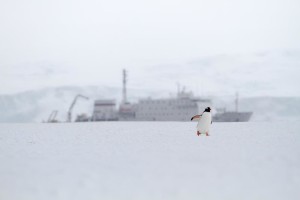
The Antarctic Peninsula is the main feeding ground for a large number of krill predators. And, since March is a critical time as they build energy stores for the long migration to tropical breeding grounds or to maintain energy in order to survive in ice-choked waters, it is anticipated that whales, particularly humpbacks, will be seen in abundance.
There is growing evidence that some humpbacks remain in ice-free areas for longer periods due to warming climates and one of the aims of the 16 March 2014 expedition is to determine how the numbers change throughout the course of the Antarctic summer. It will also go in search of the elusive minke whale, and follow killer whales as they hunt, in order to note the special techniques that they have adopted to catch their Antarctic prey of seals, penguins and whales.
Fact Box:
Specialists in small ship cruise adventures One Ocean Expeditions is offering a truly unique opportunity to join a 10-night Antarctic trip to study humpback, minke and killer whales, departing from Ushuaia on 16 March 2015.
The Marine Mammals voyage will be accompanied by Dr Ari Friedlaender a Research Scientist at Duke University, who has been to the Antarctic nearly 20 times on scientific voyages.
For further information, visit www.oneoceanexpeditions.com.

